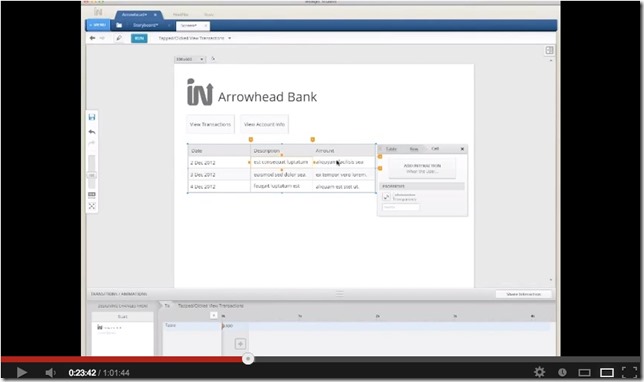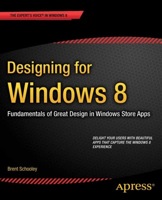Come snow or high water, Infragistics was committed to being a part of World IA Day, and for good reason. Our meeting of the minds of technologists throughout business, policy, academia, and more was a smashing success. The day was chock full of networking opportunities, presentations about “the architecture part” of information architecture, and spirited dialog from our most valuable resource – you!
![]() If you weren’t able to make it to Infragistics’ Headquarters for World IA Day, you can still tap into the knowledge base (Links To Presentations Below). After all, isn’t that the point of technology?
If you weren’t able to make it to Infragistics’ Headquarters for World IA Day, you can still tap into the knowledge base (Links To Presentations Below). After all, isn’t that the point of technology?
And keep an eye out for future events at Infragistics, including World IA Day 2014.
The Impact of Rich Iterations on User Experience Design by Tobias Komischke, PhD
Rich internet and desktop application frameworks provide advanced features like direct object manipulation and advanced animations that can enhance the user experience. This paper traces the history and evolution of rich applications and in front of the background of the T.O.T.E. framework discusses the benefits that rich application capabilities provide for the human-system interaction.
UX of Windows 8 by Kevin Richardson, PhD
Maybe I’ve been around site maps for so long now that I think in those terms without realizing it. Maybe the hierarchical structure represented by a traditional site map taps into something primal in the human brain. Folks with library science or neuropsychology backgrounds will have to weigh-in with a more definitive answer. This talk will describe my experience creating the information architecture and page layout for an app destined for use on an MS tablet PC and contrast it with the more traditional organizational structure found in Websites and iOS applications.
Having Fun With Indigo Studio by Ambrose Little and George Abraham
In this talk, George and Ambrose will introduce you to a new user-centered, rapid prototyping tool called Indigo Studio. See how fast and fun it is to bang out your design ideas with this tool that you can start using for free on your next design challenges.
Data Viz from a Developer's Perspective by Will Robertson
Create great, compelling data visualizations in your application. Covers iteration and working out how to define where you data can be visualized and what makes sense, understand different visualization requirements for different platforms and audiences. This talk addresses the challenge of visualization the right data in a right way - code demos will showcase examples and best practices.
Useful, Usable and Desirable: Designing for People by Jessica Ivins: (email Jessica for a copy of her presentation)
"It needs to be easy to use." We've heard this many times before from stakeholders, clients, and colleagues. But how do you go about making a website--or any product or service--easy to use? While there are plenty of industry leaders, books, articles, and best practices to learn from, what matters is context. For whom are you designing? What is this person's goals, motivations, and pain points? What is he or she trying to accomplish? Good design solves real problems. It doesn't just decorate. How can you design to solve real problems for real people?
This session will explore the fundamentals of user experience. We'll explore industry best practices and examples of websites that solve real problems for real people. There are many tools and disciplines within user experience, from content strategy to information architecture to user research. By understanding these tools and when to use them, and by understanding the context of each design problem we are faced with, we can begin to understand how to utilize design thinking and creating user experiences that are useful, usable, and desirable.
Visual Design Principles and Applied Examples to Interaction Design by Marcela Esteves
Visual design not only enables an aesthetically pleasing user experience but should also help convey the interaction design model and serve as user guidance. This presentation will cover visual design principles and how they were used to enhance the user experience in two Healthcare applications.
IA and VUI Design: Huh? Why Should I Care About IA With a Speech UI? by Larry Murphy
This talk will discuss the importance of collaboration between IA and VUI Design disciplines, present examples of existing IA structures that restrain modern VUI Designers from producing UIs that could thrill users and propose thought-provoking IA and VUI Design partnership ideas that can deliver user-inspiring designs.
Congress' Wicked Problem: Seeking Knowledge Inside the Information Tsunami by Lorelei Kelly
The lack of shared expert knowledge capacity in the U.S. Congress has created a critical weakness in our democratic process. Along with bipartisan cooperation, many contemporary and urgent questions before our legislators require nuance, genuine deliberation and expert judgment. Congress, however, is missing adequate means for this purpose and depends on outdated and in some cases antiquated systems of information referral, sorting, communicating, and convening. Prior to 1995, Congress had deep pools of resident expertise and was a global leader in science and technology. Most of that support system was eliminated, however and today the absence of basic knowledge management in our legislature means Congress struggles to make policy on complex issues while it equally lacks the wherewithal to effectively compete on substance in today’s 24 hour news cycle. This paper points out that Congress is not so much venal and corrupt as it is incapacitated and obsolete. And, in its present state, it cannot serve the needs of American democracy in the 21st Century.
![]()
 The CES also saw the unveiling of the Pebble, billed as a Smart Watch. This device syncs with your phone and shows caller information and text messages. You can also push custom alerts to it and run basic apps. All this functionality is wrapped up in a tiny form factor that actually manages to look the part.
The CES also saw the unveiling of the Pebble, billed as a Smart Watch. This device syncs with your phone and shows caller information and text messages. You can also push custom alerts to it and run basic apps. All this functionality is wrapped up in a tiny form factor that actually manages to look the part.











 If you weren’t able to make it to Infragistics’ Headquarters for World IA Day, you can still tap into the knowledge base (Links To Presentations Below). After all, isn’t that the point of technology?
If you weren’t able to make it to Infragistics’ Headquarters for World IA Day, you can still tap into the knowledge base (Links To Presentations Below). After all, isn’t that the point of technology?














